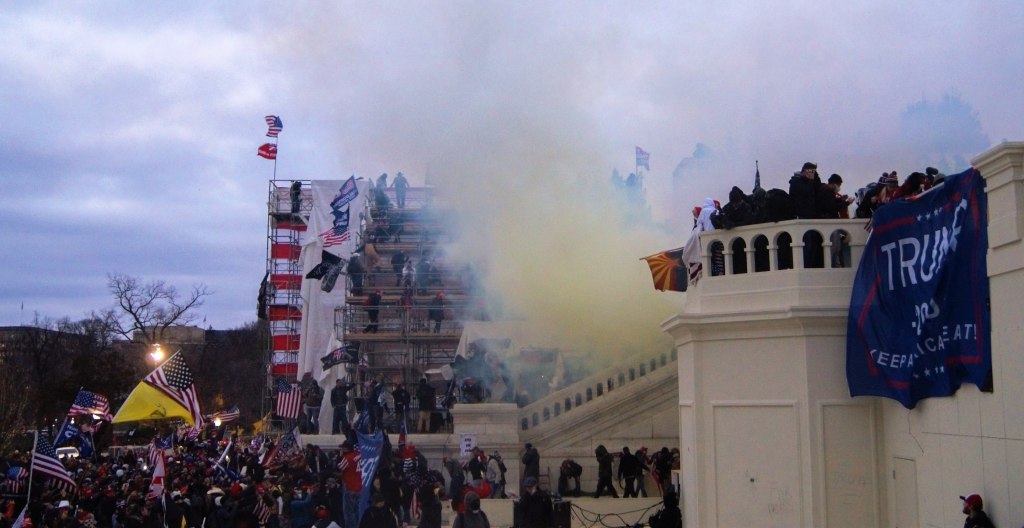(This post is based on an oral history study funded by a 2022 Center for Missouri Studies Fellowship, a program of the State Historical Society of Missouri. It is also adapted from a paper I presented at the 2023 Ozarks Studies Symposium in West Plains, Missouri.)
Carlos Sosa was born in Monterrey, Mexico in 1981. He moved to the United States when he was seventeen to live with his mother who had migrated from Mexico and was working at a poultry processing plant in Noel, Missouri, located in McDonald County. Neither Carlos nor his mother spoke much English. Carlos worked in the plant too. The income and benefits were good, but for Carlos the chicken business was just a job. He wanted something more.
Carlos made friends in Noel, and they helped him learn to speak English. One of his friends suggested he apply for the maintenance supervisor job at the local Housing Authority. The director offered Carlos the position in 2013 and gave him a year to pass his high school equivalency exam, which he did. He went on to become a U.S. citizen too. In 2021, he was recognized for his hard work with a “Maintenance Man of the Year” award from the National Association of Housing and Redevelopment Officials. It was a long journey, but Carlos carved out a new life in the Ozarks for himself and his family. To appreciate his story, it’s essential to understand the monumental changes that occurred at the turn of the twenty-first century in the place Carlos calls home.
McDonald County is at the southwest corner of Missouri. With over a dozen small townships and villages scattered throughout its border, the county in 2020 had a population of just over 23,000. Pineville, one of the smaller towns, is the county seat and is located just east of Interstate 49 that winds its way north to south through the county. Entrepreneurs began to take advantage of the area’s natural beauty in the early twentieth century by opening tourist resorts, an economic driver that was further facilitated by the construction of US Highway 71 in 1926, which brought visitors right to the banks of the Elk River that flows through the county. Local recognition of tourism as a lifeline was clearly and humorously demonstrated in 1961 when a group of citizens announced to the State of Missouri that McDonald County was “seceding” to form an independent territory in response to the state highway department’s decision to omit key tourist spots in the county from a Missouri vacation map.
By the mid-1900s, industry began to emerge in McDonald County, especially large-scale poultry production. Generations of small farmers in the Ozarks had been raising chickens for sustenance, but broader investment for income was a risky proposition because of market uncertainty and production expenses. The nationwide frugality brought on by World War II increased demand for cheaper sources of protein, and chicken quickly became the nation’s top source of meat.
Several industry leaders began to rise in northwest Arkansas in the 1960s and 70s and eventually expanded their operations into Missouri, including Simmons Foods, Lane Processing, Hudson Foods, and Tyson Foods. By the 1990s, Tyson Foods was the top poultry producer in the country after acquiring several of its competitors, including Lane Processing and Hudson Foods. One of the Hudson facilities Tyson took over in 1997 was in Noel. Also, Simmons Foods had been operating a processing plant since the 1980s in Southwest City, a township aptly named for its location at the southwest corner of the county and the state.
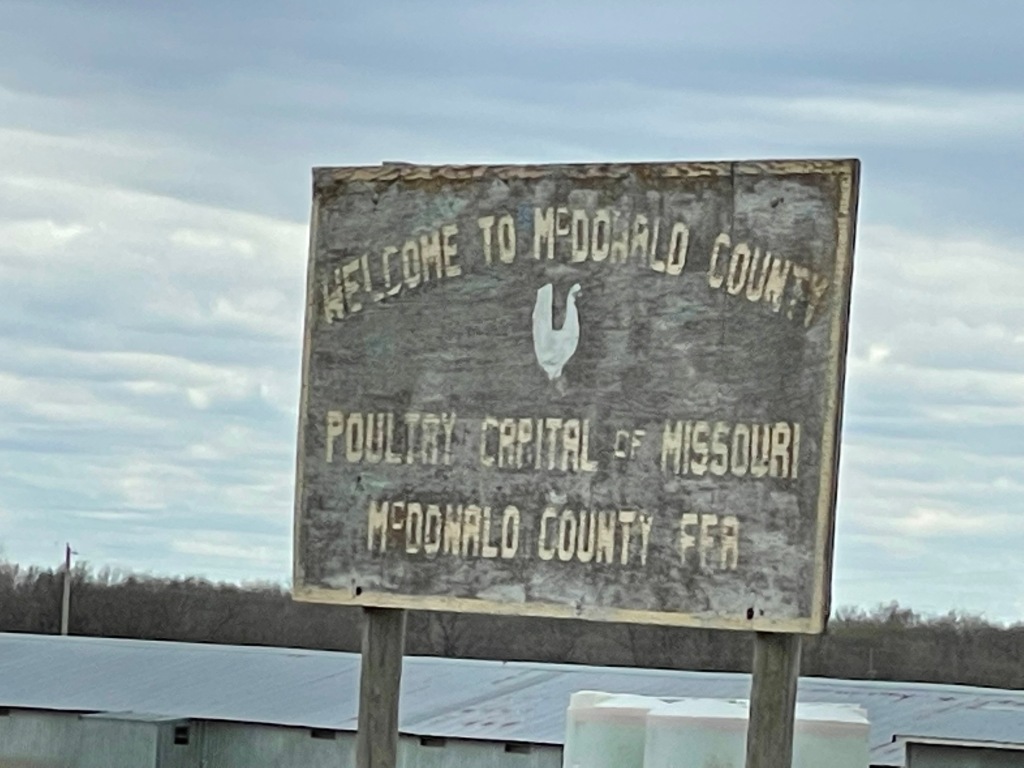
As the poultry industry evolved from farm-based to manufacturing operations, the need to secure labor became paramount. Local workers became increasingly dissatisfied with the grueling demands of high-capacity chicken processing, especially at the prevailing wages. Manufacturers began to look elsewhere for labor, preferably the nonunion variety. High school diplomas, advanced technical skills, and the ability to speak English were not necessary for many of these jobs, attracting immigrants with little formal education. Chicken plants located eight hundred miles from the nearest U.S. border often flew under the radar of immigration officers and were motivated to hire undocumented immigrants who would resist joining labor organizations, endure brutal working conditions, and file few workers’ compensation claims.
By the mid-1990s, the huge influx of Latin American immigrants into the U.S. began to reshape the workforce at Tyson Foods. The company aggressively recruited undocumented workers whose questionable legal status made them much more compliant than native-born laborers. Tyson’s hiring practices came under scrutiny in 2001 when the U.S. Immigration and Naturalization Service charged the company with conspiracy to import and transport illegal workers from the southwest border to fifteen of its processing facilities across the country, including the plant in Noel. Two years later, a jury acquitted Tyson and spared the company penalties that by some estimates would have exceeded $100 million.
In the third volume of his comprehensive study, A History of the Ozarks, Brooks Blevins draws attention to the changing face of the region’s population at the turn of the twenty-first century. He specifically points to the dynamic impact of immigrants that moved into northwest Arkansas and southwest Missouri seeking jobs in the poultry industry. Blevins includes McDonald County as one of four counties at the center of the poultry processing district where the nonwhite and Hispanic population has dramatically increased over the last thirty years. The results of this trend in McDonald County were most acutely exhibited in the two towns where processing plants were located: Tyson in Noel and Simmons in Southwest City.
Between 1990 and 2000, McDonald County had the second-highest growth in Hispanic population in Missouri, an increase from 121 to 2,030. The population distribution for Noel and Southwest City reflected an even starker contrast, which is directly related to in-migration of workers to the chicken plants. With Tyson’s acquisition of Hudson Foods, the operation at the Noel plant continued to expand into the twenty-first century. By 2001, the facility employed about 87 percent of the town’s total population. Over one-third of the town was Hispanic, although many long-time Noel residents were convinced that immigrants accounted for almost half the town’s population.
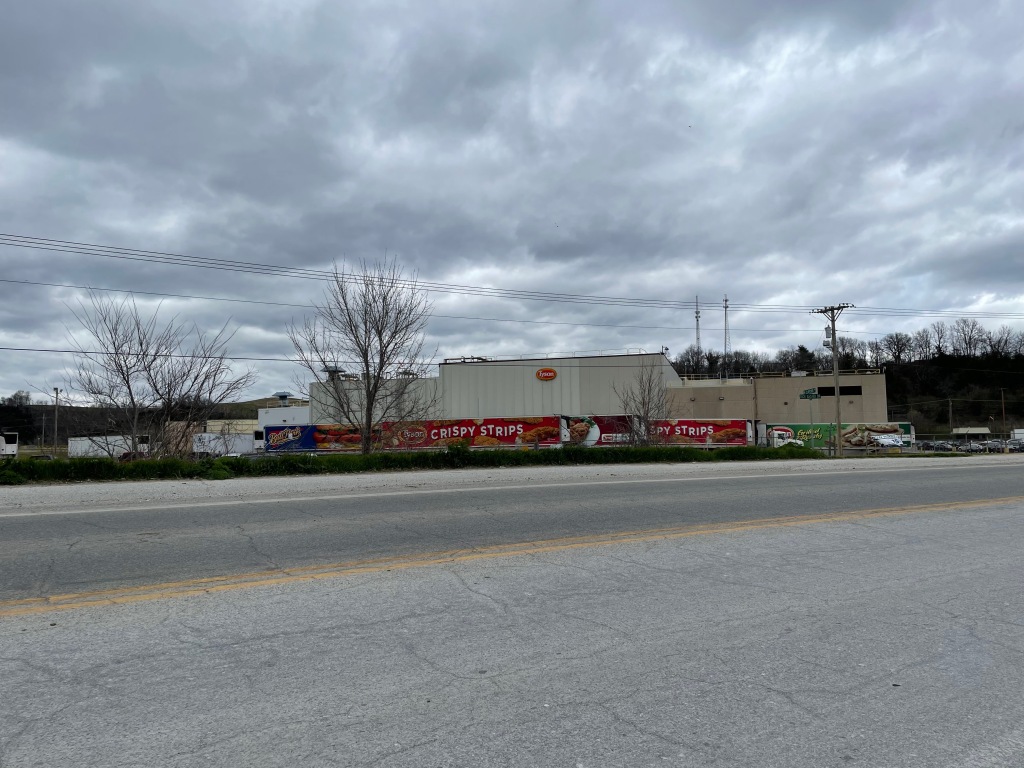
Noel’s ethnic diversity expanded further in 2008 when the closure of a Tyson beef-processing plant in Kansas prompted a group of Somali refugees working there to find new jobs in the southwest Missouri town. Within four years, Somalis accounted for 20 percent of Noel’s population. Soon they were joined by workers born in other parts of the world also seeking employment at the Noel plant, including Kenya, Sudan, the Pacific Islands, Laos, and Myanmar. Refugees from overseas were a safe bet for Tyson because their legal status was typically already established.
As was the case with Tyson in Noel, Simmons offered year-round jobs with acceptable wages for an area with a low cost of living, which attracted immigrants. Most of the foreign-born people who migrated into Southwest City in the early 21st century were Hispanic or Latin American and worked at the Simmons plant. Although white native-born people became a minority in both Southwest City and Noel, there was much more ethnic diversity among the foreign-born residents in Noel. By hiring liaisons and interpreters, Tyson made it possible for international refugees who didn’t speak or read English to function in their Noel plant.
While a certain amount of resistance to change was clearly present, especially in the 1990s and early 2000s, some business owners saw opportunities to profit from their new neighbors. Established stores were changing inventory to include products that would better appeal to Hispanic shoppers while new businesses were popping up that catered specifically to Spanish speaking customers. Even jukeboxes in the local bar began offering selections from south of the border.
In Noel, sales tax revenue is critically important because it is a primary source of funding for the town’s administration, especially the police department. Therefore, any increase in retail activity contributes to the town’s success. Immigrants and refugees used their wages to pay for goods and services, and many of them shopped locally. Some businesses were owned and operated by people who migrated to the county beginning in the mid-1990s.
Carlos Sosa, introduced at the beginning of this post, continued working for the Noel Housing Authority, but he also became a real estate developer and manager with both commercial and residential properties in McDonald County. His wife, Marlene, opened Sosa’s Hairdressing in Noel, where she built an impressive customer base of multiple races, including white people. The couple purchased several storefronts on Main Street in Noel occupied by successful retailers and were very engaged in the community.
Ann Harmon is a woman with deep family roots in the southwest Missouri Ozarks going back to the nineteenth century. She has owned and managed several businesses and continues to own multiple buildings in Noel. One day a Somali man named Muhammad Abdi approached Harmon and told her he wanted to rent one of her vacant buildings on Main Street. In 2010, Abdi and his wife, Luul Ahkmed, opened the African Grocery Store in Harmon’s building. In addition to specialty foods and household goods, the store also carried traditional attire for its Muslim customers. The owners even served meals in the back of the building. Muhammad and Luul later established the town’s first mosque in another of Harmon’s buildings next door to the store. Unfortunately, tragedy struck on December 28, 2021, when a fire destroyed both the African Grocery Store and the mosque, leaving behind only the stone walls of the structures.
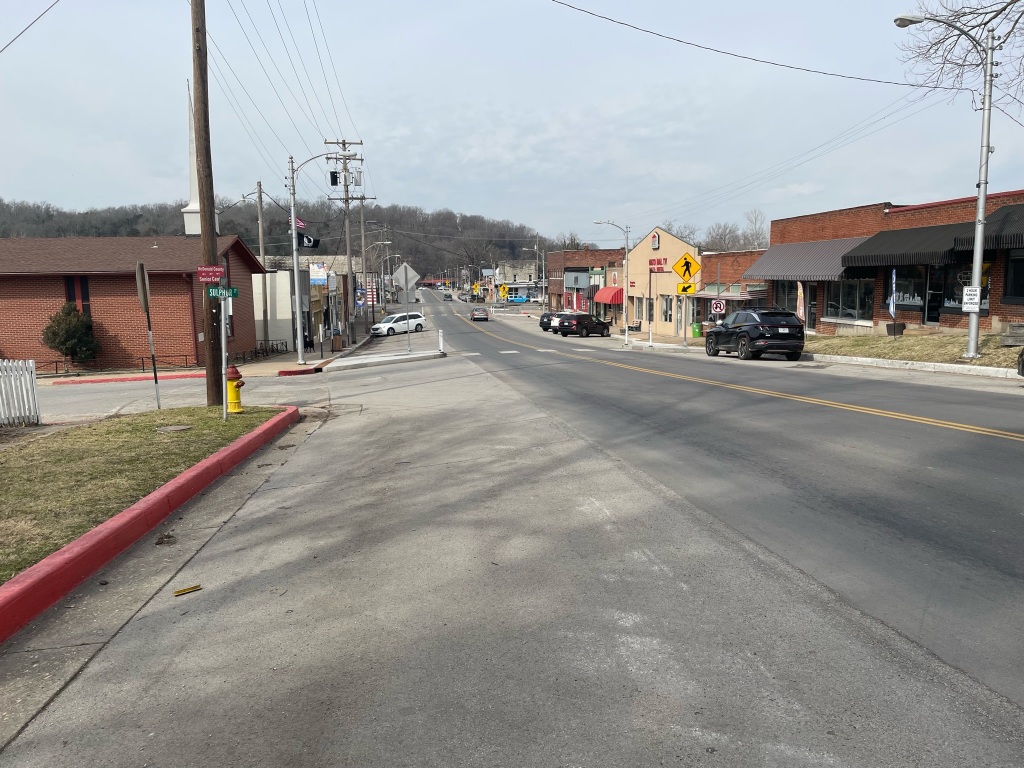
Non-native residents have opened several businesses in the county over the last thirty years. A smaller African store opened on Main Street in Noel after the fire, which was also a location for money transfer services for Somali immigrants. Rosa’s Mexican Supermarket located across the road from the Tyson plant in Noel stocked an array of fruits, vegetables, specialty items, baked goods, and prepared foods that most grocery stores in the area didn’t have. Online reviews of Rosa’s were overwhelmingly positive. Another Mexican grocery store located a block off Main Street had one of the most attractive storefronts in town and a beautiful mural painted on the north side of the building. An Hispanic couple owned and operated a convenient store right next to the Tyson plant in Noel.
Although outdoor tourism was an economic pillar for Noel, it took a serious hit in August 1960, when U.S. Highway 71 was rerouted away from town and the recreational spots along the river there. Ann Harmon recalls how important the highway was to Noel. “We had tremendous flow of traffic,” she says. “We had a lot of motels and restaurants. And then the road changed. The motels went out of business; the restaurants diminished. We lost almost all the bars. We used to have more bars than churches.”She said the place went to hell when that ratio reversed.
When immigrants and refugees began to move into Noel, many people were worried that tourism would suffer. However, some longtime residents believed the solution to boosting tourism, perhaps on a year-round basis, could actually be found in the town’s ethnic diversity. Terry Lance, the mayor of Noel, admitted that having a chicken plant next to a major campground on the Elk River isn’t exactly a tourist attraction, but he was convinced the local immigrant population could be an asset. Getting different people from different backgrounds in business would be the best thing that ever happened in the town, in his opinion.
When new workers first began moving into the county, one of the most immediate needs was securing affordable housing, which created both a crisis and an opportunity. Rental houses quickly filled beyond capacity in the late 1990s. Old motels and apartment complexes in poor repair that had struggled to stay open were suddenly packed with fulltime residents. Empty tourist cabins dotted around the area became homes too. Eventually developers would build more apartments, which created work for builders, contractors, and property managers.
The rapid introduction of multiple ethnic groups and languages into McDonald County ushered in issues with law enforcement. Acquiring a driver’s license is one of the hardest things for immigrants to do. Some of them resorted to using fraudulent documents to get a license. Even after getting one, they often had trouble adjusting to traffic laws and were more likely to be stopped than native drivers. Be that as it may, officials reported that non-native residents were no more likely to commit violent crimes than natives, and most of the incidents that did occur were domestic in nature, which sadly included suicide attempts.
Perhaps the biggest barrier that everyone faced as immigrants poured into the county was language, and the situation was most acute in the schools. The problems were compounded by the rapid growth in population, especially in Noel. Construction on a new elementary school began in 1994 with the expectation that the building would be at 65 percent capacity and would accommodate growth over the next decade. When it opened a year later, Noel Elementary was already completely full, and most of the new students were children of Hispanic workers, who spoke limited English. Some teachers left their jobs, too overwhelmed to continue under the new conditions.
Spanish is difficult, but it’s not insurmountable. However, the introduction of language groups from African countries, the Pacific Islands, and Southeast Asia brought even greater challenges. By some accounts, there were close to a dozen different languages, along with multiple dialects, spoken by various ethnic groups and nationalities in McDonald County at one time. Learning a second language, if not several more, became a priority for some people in the county. The schools received assistance from translators hired by Tyson to help students take exams, but there are no words in some of these languages and dialects that identify the concepts covered in standardized tests. Even the context presented serious issues for children coming from cultural backgrounds so different from those in the U.S. Their fathers had been murdered. They survived refugee camps overseas.
Before the mid-1990s, McDonald County folks had little experience with cultural, ethnic, or racial diversity in their community. Longtime residents were exposed to customs and practices they considered strange, even shocking at times. Joyce Short is a local woman with residential property she has rented to immigrants. She recalls receiving a frantic late-night call from a neighbor of one of her renters who told her something terrible was happening. She arrived to find that her renters were preparing to have a barbecue. She asked them what was going on. The men gathered in the yard told her they were cooking a goat. She let them know that cooking a goat in the yard was one thing; slaughtering it on site was quite another. She said, “It’s interesting what a mature woman in pajamas can do at a barbeque or beer party that’s gotten a little too loud in the middle of the night.”
The county’s social services network was not prepared for the myriad needs of these new arrivals. A nonprofit organization called RAISE, an acronym for Refugee and Immigration Services & Education, incorporated in 2017 with offices in a structure on the Noel Housing Authority property. RAISE received financial support through donations and solicited major gifts, including assistance from the Walmart Foundation. The highest priority for RAISE was education in the areas of English literacy, parenting, health and wellness, computer proficiency, finances, and employment.
How well did immigrants integrate into the community? Some immigrants chose the path toward citizenship, and Hispanic residents began running for office in Noel and Southwest City as early as 2002. In 2022, a man named Feliberto Barrientos was the unchallenged candidate elected to represent the North Ward in Noel. He and his wife operated a food truck and had lived in the area for a decade or more. Mayor Lance encouraged him to run for office, thinking he would be an asset to city governance. The mayor said, “He has a perspective that I don’t have, and I’m sure don’t completely understand. And I think that’s important.”
The role religion played in the cultural transformation of McDonald County cannot be overstated. Before the 1990s, the predominant religious identity in the county was Protestantism. By 2001, attendance at the local Catholic church in Noel went from a handful of white people to an overflowing crowd of mostly Hispanic worshippers participating in a Spanish Mass. As people from Latin America began to make their way into the area, the Catholic population continued to expand. St. Nicholas Episcopal Church in Noel also offered Spanish services. With the arrival of refugees originating in Muslim countries of Africa, Islam was introduced into the religious mix. The primary faith tradition of the Pacific Islanders is Christianity, some of whom participated in local Protestant worship services. But it is important to note that religious diversity was not nearly as great as ethnic and linguistic differences in Noel.
After more than a decade of living in Noel, Muslim residents may not have necessarily felt embraced with open arms by everyone, but the circumstances definitely improved. After the fire that destroyed the mosque on Main Street, local and outside fundraising efforts made it possible in 2022 to open a new mosque in a building behind the original one. The ceremony to open the new facility was a public event, and dignitaries invited to speak included Muslim elders and leaders along with the mayor, the city marshal, the fire chief, and a management representative from the local Tyson plant. Other community members worked diligently to dispel myths and clear up misunderstandings about the Muslim people in Noel, especially educators, landlords, and retailers who interacted with these residents.
No other church in the county was more inclusive and welcoming to immigrants than Community Baptist Church in Noel. Joshua Manning became the pastor there in September, 2017, serving a multilingual congregation including Hispanics, Native Americans, and members of the minority Karen population from Myanmar. Eventually the church began offering worship services in at least four different languages. They also established a clothing bank and hosted English classes for nearby Crowder College. During the COVID pandemic, the church began a food pantry ministry. Tyson donated $7,000 in 2022 for the purchase of a walk-in freezer for the pantry, which was regularly serving an average of 150-175 families.
McDonald County underwent drastic changes between the early 1990s and 2023. To the outside observer, the county may have looked quite segregated, with ethnic and language groups largely keeping to themselves outside of work and school. But there were a few places where cultural blending was encouraged, such as a few community-wide celebrations and festivals, and some retail establishments. In 2021, Tony and Emily Savage opened The Common Cup, a coffee shop in Noel on Main Street in a building owned by Carlos and Marlene Sosa. Tony and Emily wanted to create an atmosphere where people from vastly different traditions could gather and become acquainted while enjoying a cup of coffee or tea. They served beverages inspired by some of the nationalities represented in Noel, and they built a racially diverse staff for the shop. A sign on the wall in The Common Cup was a visual reminder of the Savages’ business model: “We Filter Coffee, Not People.”
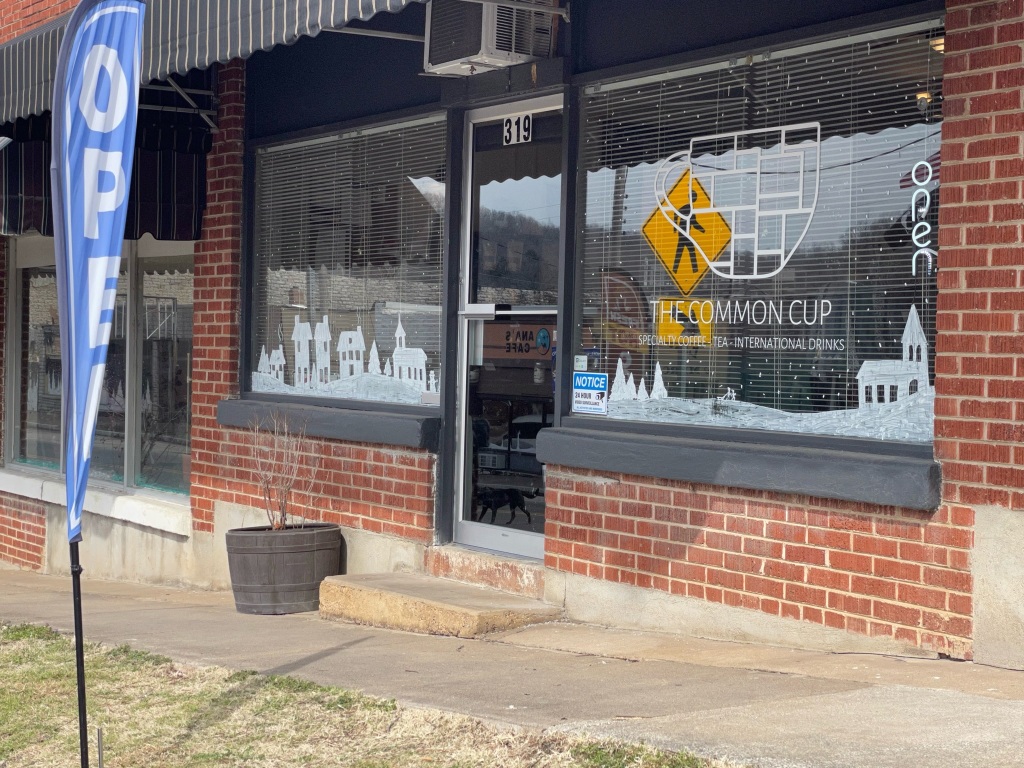
There were still people in the county who were dissatisfied with the level of diversity where they lived, and some would have been perfectly happy if the chicken plants closed immediately and took their workers with them. Others had a more positive view. Angie Brewer, the principal of McDonald County High School, embraced a theological perspective. “It’s a mission field,” she said. “I always did think when I was a kid, I might be a missionary. But I didn’t have to go to Africa. It came to me. I didn’t have to go to Burma. It came to me.”
What would indeed happen to Noel and Southwest City if the chicken plants closed? As it turns out, this is not a hypothetical question. Tyson shuttered its Noel plant in October, 2023, along with several other locations in the region. Over 70 percent of Noel’s population would have to find work elsewhere. By the end of 2023, many of the immigrants and refugees had left Noel, much in the same way they left other places to come to McDonald County looking for jobs. The impact on the community had a ripple effect. The owners of the Common Cup sold out to new owners who renamed the coffee shop, moved it to a new location, and eliminated the ethnic-inspired beverages from the menu. Community Baptist Church closed in late November as Pastor Manning saw a sizeable portion of his congregation move away from McDonald County.
For people like Carlos Sosa, who left the chicken business behind for what he considers better opportunities, McDonald County is not a placeholder until something else comes along. It is a home for him and his family. Like a few other foreign-born residents, Carlos reshaped the place where he lives in southwest Missouri, from teaching children in his church to being a community activist and building businesses. However, this latest development could have an adverse effect on his family’s financial future in Noel. For the individuals whose sole source of income was the Tyson plant, there were very few options other than to leave the town to find work elsewhere. Local officials are exploring various options for the vacant plant with Tyson and potential buyers in hopes of finding a new employer that can bring back some of the jobs. Even so, the situation in Noel looks mighty bleak in early 2024.
Sources
Interviews
Angie Brewer (Principal, McDonald County High School), in discussion with the author at McDonald County High School in Anderson, Missouri, April 8, 2022
Carey Ellison (Noel branch public library manager), in discussion with the author at the Noel branch public library in Noel, Missouri, April 8, 2022
Kara Gebre (Program Director for RAISE) and Mike Newman (Executive Director for RAISE), in discussion with the author at RAISE office in Joplin, Missouri, November 21, 2022
Ann Harmon (former business owner and property lessor), in discussion with the author at Noel Housing Authority in Noel, Missouri, August 29, 2022
Rosie Hartley (Director, Noel Housing Authority), in discussion with the author at Noel Housing Authority in Noel, Missouri, July 12, 2022
Terry Lance (Mayor, City of Noel), in discussion with the author at Noel City Hall in Noel, Missouri, May 25, 2022
Joshua Manning (Pastor, Community Baptist Church in Noel, Missouri), Facebook direct message to author, February 25, 2022
Mike Newman (Executive Director for RAISE), email messages to author, December 11-12, 2022
Sheila Owens (Media Specialist, Noel Elementary School), in discussion with the author at Noel Elementary School in Noel, Missouri, May 25, 2022
Lisa Reece (Manager, Dollar General), in discussion with the author at Dollar General in Noel, Missouri, July 12, 2022
Hazel Sheets (Director, McDonald County Public Library), in discussion with the author at McDonald County Public Library main branch in Pineville, Missouri, August 29, 2022
Joyce Short (Noel Housing Authority Board), in discussion with the author at Noel Housing Authority in Noel, Missouri, August 10, 2022
Carlos Sosa (maintenance supervisor at Noel Housing Authority), in discussion with author at Noel Housing Authority in Noel, Missouri, July 12, 2022
Randy Wilson (Noel City Marshal) in discussion with the author at Noel City Marshal office in Noel, Missouri, July 12, 2022
Other Sources
Oscar Avila, “Cultures Blend When Ozarks Town has Influx of Hispanic Factory Workers.” Knight Ridder/Tribune Business News, October 27, 1997, Gale Business
Brooks Blevins, A History of the Ozarks, Volume 3: The Ozarkers (Urbana: University of Illinois Press, 2021) 242
Donald Bradley, “In small-town Missouri, a collision of cultures,” The Kansas City Star, June 10, 2012, A1, A18-A19, Newspapers.com
Gregory Cancelada, “Not everyone is shocked by charges at Tyson Foods,” St. Louis Post-Dispatch, December 23, 2001, 52, Newspapers.com
“Compacts of Free Association: Populations in U.S. Areas Have Grown, with Varying Reported Effects,” United States Government Accountability Office, June 15, 2020 (web page)
“Explore Census Data,” United States Census Bureau (website)
Thomas Gounley, “Somalis Find Safe Refuge,” The Springfield News-Leader, February 6, 2017, A1, A6, Newspapers.com
David Griffith, “Consequences of Immigration Reform for Low-Wage Workers in the Southern U.S.: The Case of the Poultry Industry,” Urban Anthropology and Studies of Cultural Systems and World Economic Development, 19, No. ½, Immigrants in U.S. Cities (Spring-Summer 1990): 161
Frank Griffiths, “Hispanics entering politics in McDonald Co.,” The Springfield News-Leader, March 31, 2002,1,8, Newspapers.com
Perla M. Guerrero, Nuevo South: Latinas/os, Asians, and the Remaking of Place (Austin: University of Texas Press, 2017), 114
Kimberly Harper, “McDonald County,” Missouri Encyclopedia, The State Historical Society of Missouri (web page)
Kimberly Harper, White Man’s Heaven: The Lynching and Expulsion of Blacks in the Southern Ozarks, 1894-1909, (Fayetteville: University of Arkansas Press, 2010), xxii, 253
Kaylea M. Hutson-Miller, “Noel Church Reaches Out to Immigrants from Around the World,” Joplin Globe, September 1, 2019, joplinglobe.com
Kaitlyn McConnell, “Noel coffee shop starts to bring cultures together,” Ozarks Alive (website), May 23, 2021
Kaitlyn McConnell, “Ozarks Notebook: Tyson, the Grinch Who Upended Christmas City,” The Daily Yonder (website), December 22, 2023
William McQuillen, “Tyson Acquitted of Plotting to Hire Illegal Workers,” Bloomberg, (March 26, 2003), Institute for Agriculture & Trade Policy (web page)
“Noel Approves New Insurance Agency, Passes Ordinance,” McDonald County Press, August 13, 2020, nwaonline.com
“Noel Fire Cause ‘Undetermined,’” McDonald County Press, March 4, 2021, nwaonline.com
Phillip O’Connor, “Hispanics Transform Rural Missouri Town,” St. Louis Post-Dispatch, March 18, 2001, 1, 9, Newspapers.com
Susan Pozo, ed., The Human and Economic Implications of Twenty-first Century Immigration Policy (Kalamazoo, Michigan: W. E. Upjohn Institute, 2018), 110-111, EBSCOhost
“Reporting Terminology and Definitions,” United States Department of Homeland Security (web page)
Brent Riffel, “The Feathered Kingdom: Tyson Foods and the Transformation of American Land, Labor, and Law, 1930-2005” (PhD diss., University of Arkansas, 2008), 259, ProQuest LLC
Steve Striffler, Chicken: The Dangerous Transformation of America’s Favorite Food, Yale Agrarian Studies Series (New Haven and London: Yale University Press, 2005), 42-45
Karen Testa, “Mexican-American Makes Inroads In Missouri Town,” St. Louis Post-Dispatch, July 5, 1997, 20, Newspapers.com
“Train Explosion Wrecks Noel; One Dies, 40 Hurt,” Moberly Monitor-Index, August 4, 1969, 1, Newspapers.com
Tyson Foods, “Tyson Foods Commits More Than $1 Million to Expand Legal and Citizenship Support for Team Members,” news release, April 12, 2022
Alexus Underwood, “Tyson Donates $7,000 to Community Baptist Church in Noel,” McDonald County Press, July 14, 2022, nwaonline.com
United States Census Bureau (website)
Sylvia R. Lazos Vargas, “Missouri, the War on Terrorism, and Immigrants: Legal Challenges Post 9/11,” Missouri Law Review, 67, no. 4 (Fall 2002): 808


